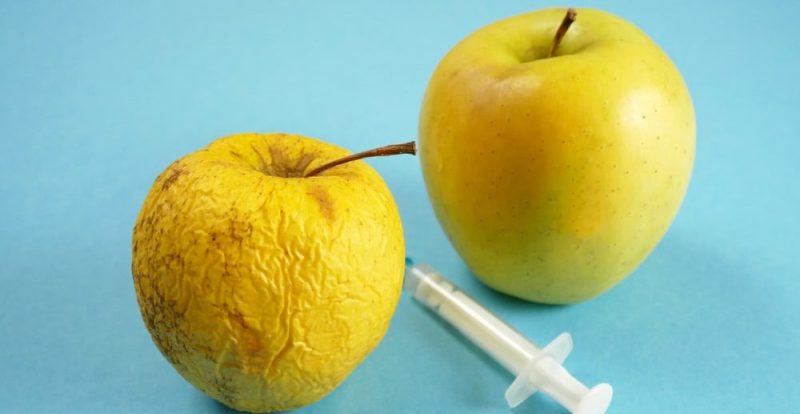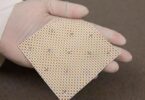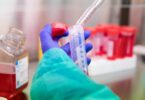Learn what genetic modification consists of to alter the composition of an organism’s DNA.
Genetic modification of genetically modified organisms is obtained through a process known as genetic engineering or recombinant DNA technology, through which genes of commercial interest are transferred from one organism to another.
Direct genetic modification had its beginnings in the 20th century, through the developments of biochemistry and genetics.
In that sense, the discovery was published in Nature Magazine, one of the most prestigious scientific publications in the world. Its authors consider that the technique is very effective, even though it was in an initial phase.
This is why genetic engineering is defined as a process that uses laboratory technologies to alter the composition of an organism’s DNA.
Genetic modification allows you to modify the genetic code of a cell to eliminate possible failures in its functioning and also the diseases that it may cause.
Most research with genetically modified organisms has been carried out in countries such as the United States and Western Europe, however many developing countries such as Brazil, China, and India have been developing capacities to carry out research on genetically modified organisms.
DNA is encoded by four chemical compounds: adenine (A), thymine (T), cytosine (C), and guanine (G). To describe the DNA of cells, scientists use a very long sequence with these four letters, which are repeated in a specific order.
Likewise, this modification would allow us to correct the genetic causes of many diseases: from hereditary blindness to degenerative diseases, or even to modify the genome of embryos so that babies are born free of diseases.
On the other hand, mutations can occur from errors in DNA replication during cell division, exposure to mutagens, or a viral infection. Likewise, mutations are caused by environmental factors known as mutagens.
Types of mutagens include radiation, chemicals, and infectious agent. Mutations can be spontaneous in nature.
Certainly, the DNA of all kinds of living beings can be edited, for various purposes: to treat diseases, create transgenic foods, improve non-pathological human characteristics, among other purposes.
Therefore, manipulation of genes aims to understand their functions and create disease models. It has been done in many organisms: plants, models such as the Drosophila fly, yeast or zebrafish. And it is a technique that allows precision gene surgery to be performed on human cells.
Its function is, deoxyribonucleic acid, or DNA, encodes the information that cells need to make proteins. A related type of nucleic acid, called ribonucleic acid (RNA), occurs in different molecular forms that fulfill multiple cellular functions, including protein synthesis.
Genetic modification or engineering may include a change in a single base pair (A-T or C-G), the deletion of a region of DNA, or the addition of a new segment of DNA.
Genetic alterations have two origins:
Due to external, environmental factors.
Due to internal, genetic factors.
The recommendations to improve DNA would be the following:
Reduce food and medication toxins.
Practice exercise and reduce stress.
Variations in non-coding DNA have been linked to several types of cancer and developmental disorders such as the isolated Pierre Robin sequence.
This condition is caused by changes in areas of non-coding DNA that act as enhancer elements.
Altered enhancers in the isolated Pierre Robin sequence control SOX9 gene activity.
Many regions of noncoding DNA play a role in controlling gene activity, meaning they help determine when and where certain genes are turned on or off.
Changes in DNA can occur from errors in DNA replication during cell division, exposure to mutagens, or a viral infection.
These mutations can increase the risk of cancer or birth defects.
Foods derived from genetically modified organisms have been on the world market for more than two decades and the application of this type of modern biotechnology, according to the WHO, “food production presents new opportunities and challenges for human health.”
Likewise, the creation of genetically modified organisms has been a very important point in the agricultural sector, because it has been possible to obtain crops that are more resistant to diseases and other characteristics, reduction of undesirable compounds present in food, as well as the production of medicines and different types of vaccines.
Currently there are several types of genetic modification, among which we have:
- DNA sequencing is a process that uses different biochemical methods and techniques to the DNA molecule of an organism, in order to determine the specific sequence of nucleotides that compose it, to decipher the natural composition of the biochemical processes that occur carried out during life.
- Recombinant DNA consists of the generation of an artificial DNA molecule through in vitro methods, to then introduce it into an organism and evaluate its behavior.
- The Polymerase Chain Reaction (PCR) is a DNA amplification technique and is currently used in the identification of DNA in forensic investigations, or the genetic identification of viruses and bacteria of new diseases.
- Technique that allows you to recognize invading DNA and be able to defend yourself in future events.
Terms used:
Genetic engineering: A process that uses laboratory technologies to alter the composition of an organism’s DNA.
DNA: is a nucleic acid that contains the genetic instructions used in the development and functioning of all living organisms and some viruses; It is also responsible for hereditary transmission.
Mutation: is a change in the DNA sequence of an organism.
FONT
https://es.wikipedia.org/wiki/%C3%81cido_desoxirribonucleico
https://concepto.de/manipulacion-genetica/









